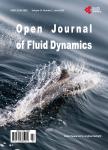On the Study of Autonomous Underwater Vehicles by Computational Fluid-Dynamics
作者机构:Department of Mechanical EngineeringFederal University of Campina GrandeCampina GrandeBrazil Department of PhysicsState University of ParaibaCampina GrandeBrazil Department of Physics and MathematicalFederal University of Campina GrandeCampina GrandeBrazil Federal Institute of EducationScience and Technology of the Sertao PernambucanoSerra TalhadaBrazil
出 版 物:《Open Journal of Fluid Dynamics》 (流体动力学(英文))
年 卷 期:2020年第10卷第1期
页 面:63-81页
学科分类:08[工学] 082601[工学-武器系统与运用工程] 082501[工学-飞行器设计] 0826[工学-兵器科学与技术] 082602[工学-兵器发射理论与技术] 0825[工学-航空宇航科学与技术]
基 金:Brazilian Research Agencies CNPq CAPES and FINEP for supporting this work
主 题:Autonomous Underwater Vehicle Fluid Flow Computational Fluid-Dynamics Drag Coefficient
摘 要:Autonomous Underwater Vehicles (AUV’s) are considered as advanced classes of vehicles, capable of performing pre-established missions without physical communication with the ground or human assistance. The research and development of this type of vehicles have been motivated, due to its excellent characteristics, ideal to the military, scientific and industrial sectors. Thus, the objective of this paper is to study fluid flow behavior past over AUV’s, without and with control surfaces (rudders), by Computational Fluid-Dynamics (CFD), aiming to obtain information about the impact of the operating depth and control surfaces on the vehicle s hydrodynamics, in order to help researchers and designers of this class of vehicles. Results of the drag coefficient, pressure, velocity and streamlines distribution around the vehicles are presented and analyzed.



